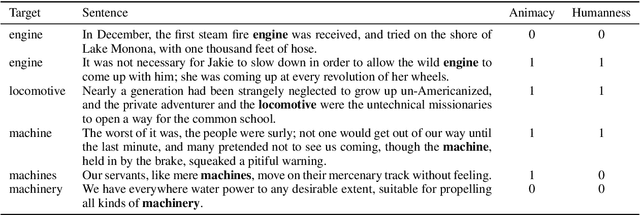Living Machines: A study of atypical animacy
Paper and Code
May 22, 2020



This paper proposes a new approach to animacy detection, the task of determining whether an entity is represented as animate in a text. In particular, this work is focused on atypical animacy and examines the scenario in which typically inanimate objects, specifically machines, are given animate attributes. To address it, we have created the first dataset for atypical animacy detection, based on nineteenth-century sentences in English, with machines represented as either animate or inanimate. Our method builds upon recent innovations in language modeling, specifically BERT contextualized word embeddings, to better capture fine-grained contextual properties of words. We present a fully unsupervised pipeline, which can be easily adapted to different contexts, and report its performance on an established animacy dataset and our newly introduced resource. We show that our method provides a substantially more accurate characterization of atypical animacy, especially when applied to highly complex forms of language use.
 Add to Chrome
Add to Chrome Add to Firefox
Add to Firefox Add to Edge
Add to Edge